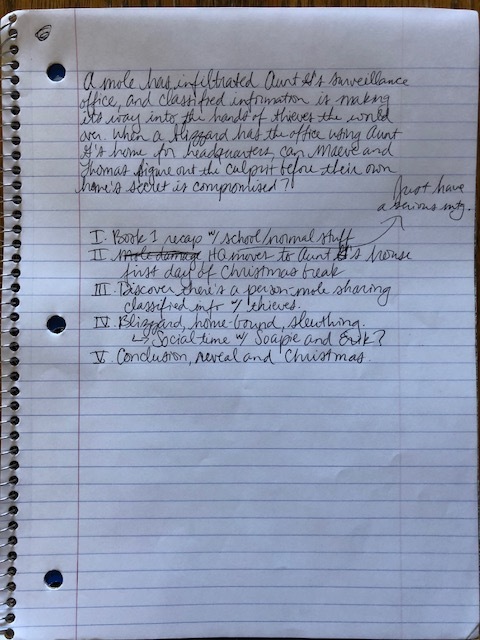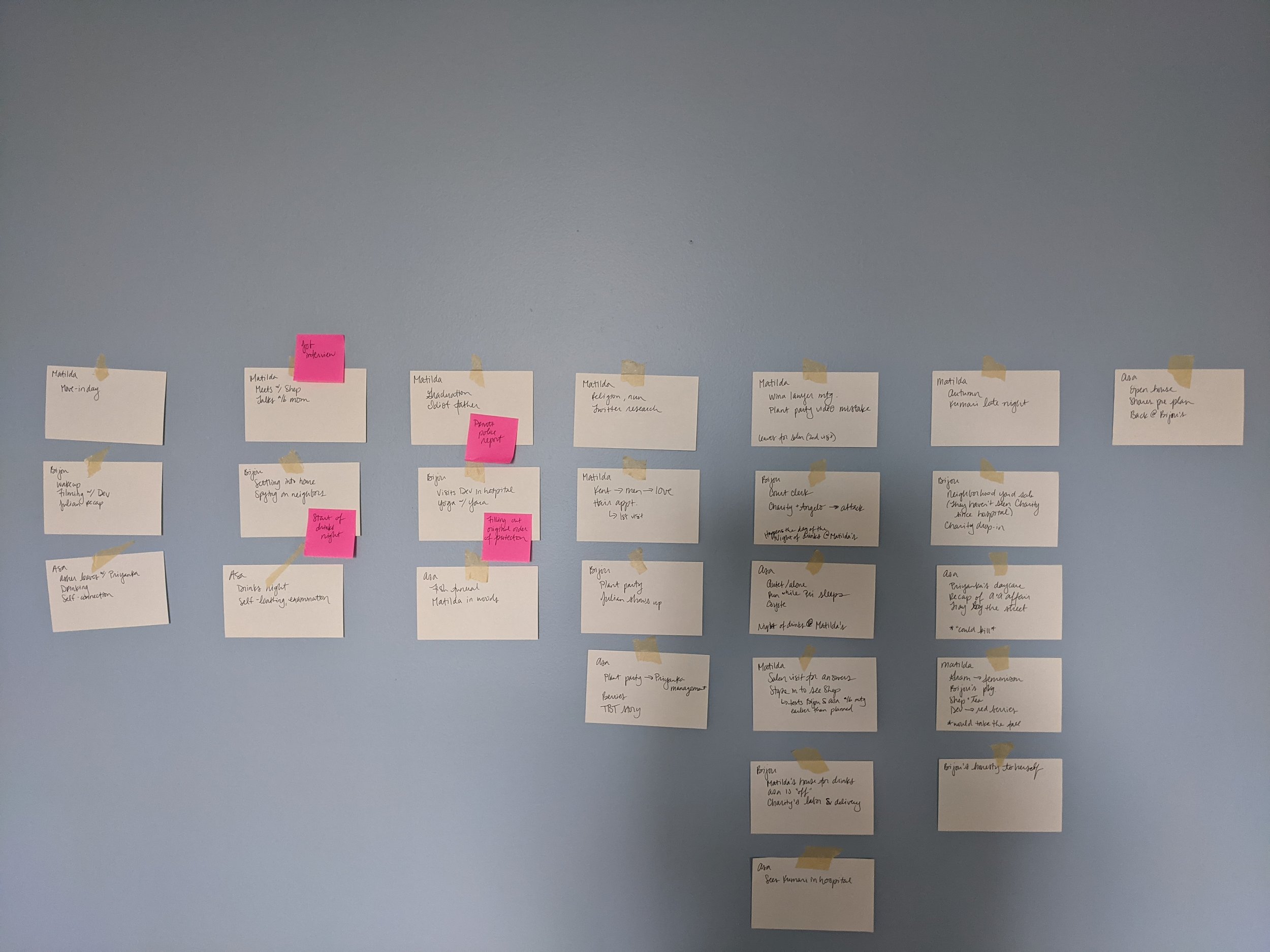John Grisham and I have yet to meet, which is how he got away with saying this in The New York Times:
“I have yet to meet [a writer] who admits to using an outline.”
Let me back up.
The bestselling writer gave eight practical fiction-writing tips to the Times earlier this year, one of them being DON’T WRITE THE FIRST SCENE UNTIL YOU KNOW THE LAST. He wrote:
“This necessitates the use of a dreaded device commonly called an outline. Virtually all writers hate that word. I have yet to meet one who admits to using an outline.
Plotting takes careful planning. Writers waste years pursuing stories that eventually don’t work.”
OK. I’ll admit to it. I use outlines.
Why should I create an outline?
First, you shouldn't do anything. No one’s making you, unless you’re in school and given the directive to turn in a research paper outline (remember those?). If you’re a bonafide grown-up, you can do whatever the heck you want. It’s one of the perks!
So let’s remove “should” from this conversation’s language.
Who might want to create an outline?
See, isn’t it better without “should”?
Writers who might want to follow an outline for their work include:
First-time writers
Second-time writers
Long-time writers
Writers who are incredibly verbose
Writers who are unfailingly succinct
Writers who start but never finish projects because they lose their way
You’re bright. You see what I’m getting at. All writers can benefit from sketching their story’s plot. It forces you to think of the major highlights, the big plots points you want to hit, and helps you form them into an order that’s well-paced and makes sense for your characters.
Also, when you sit down to write for the day (you are writing every day, right?), you won’t be staring down the dreaded blank page, cursing at the blinking cursor. No, you’ll know just what to do, because you have an outline to guide you.
When is the best time to create an outline?
I’ve found it valuable to create story outlines before writing a word of my project, once a project’s under way or when I’m stuck in a project; I’ve done all three. An outline forces you to zoom out on your work to make sure it accomplishes what you want: adhering to a well-paced plot so you don’t employ an uninspired moment to instead, say, do a load of laundry or peel your split ends. Keep writing, friend.
“Then the writing became so fluid that I sometimes felt as if I were writing for the sheer pleasure of telling a story, which may be the human condition that most resembles levitation.”
How do I create an outline?
An outline is an intentional plan for the story you’re building, guiding you, the author, so you don’t lose your way. You will structure the outline chronologically to keep your story on track.
From your school days, you probably remember an outline that looks like this:
I. First
II. Second
III. Third
IV. Fourth
V. Fifth
or a more comprehensive outline, like this:
I. First
i. Sub-point
II. Second
III. Third
i. Sub-point
ii. Sub-point
a. Sub-sub point
b. Sub-sub point
iii. Sub-point
IV. Fourth
i. Sub-point
ii. Sub-point
V. Fifth
Here’s a rough book summary and outline I made for a middle-grade sequel I’ve been working on for a couple years (I find it helpful to write by hand sometimes because it solidifies what’s in my brain in a way that typing doesn’t):
If Roman numerals give you nasty grade-school flashbacks, fear not: They are not a requirement for creating an outline. Sometimes, I employ them.
Other times, I tape notecards up on my wall to plan my plot:
Still other times, I create flow charts.
Or here’s your chance to make use of your writing app’s myriad wackadoodle symbols to signify each point or those childhood colored pencils you can't bear to part with to color-code your outline.
Whatever works for you works. It’s the right way.
Devise a consistent strategy for your outline, like having each main point (I., II., III., etc.) represent a chapter, without binding yourself to a page count. Each piece of your outline might represent five or 50 pages. The point is to clear a writing path for yourself, with the path well-lit and free of debris.
What if, along the way, I deviate from my outline?
Grisham says, “Plotting takes careful planning,” and this is true. My opinion is that this is a great thing. Writing can be total magical lark, or it can be a thoughtful diegesis. Whether you write when the mood strikes or have a set time every day, having a plan going into a writing session means you take your craft seriously.
Go, you!
Yet you needn’t have your entire story sketched out, start to finish, without the leeway to deviate from the outline. You’re in control here. Wahoo! If, in the course of writing your story, you realize a character’s arc is better placed in Chapter 12 instead of 18 or that the entire tale makes more sense when set in Victorian England rather than present-day Rhode Island, by all means, go for it.
This is your story, and an outline is simply one tool you can use to reach that ever-exciting The End. (C’mon, does it ever stop being incredible/amazing/sunshiny/wonderful getting to type this at the close of your work? YOU DID IT, FRIEND.)
“We work hard to outline and plan and design and estimate and organize whatever it is we’ve set out to do, all the while keeping in mind that when we start, we don’t actually know what we have on our hands.”
Want to receive news and blog posts straight to your inbox?
Sign up here!
As a special gift, you'll receive my six book recommendations to help you become a better writer.



